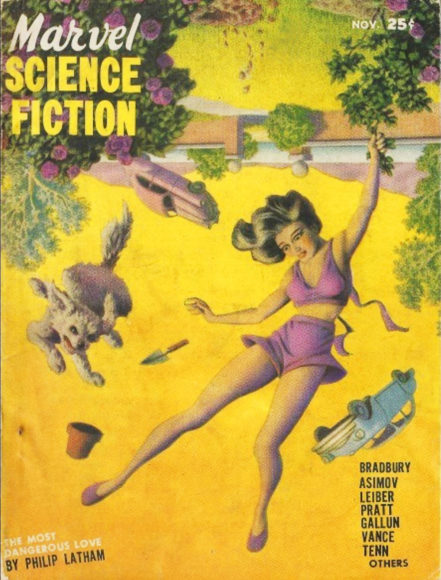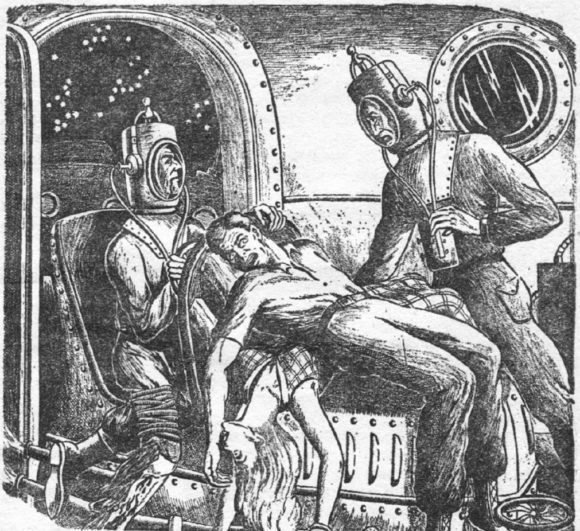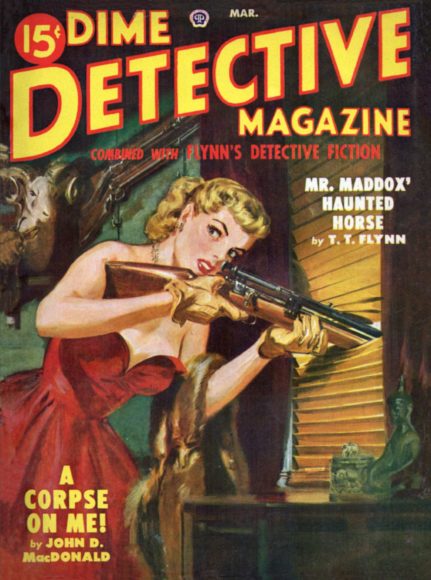
Few people still read the pulps. There are collectors, like those who gather at PulpFest, that buy, collect, and read the actual magazines from the past. But they are not many anymore. Pulps were printed on cheap paper that wasn’t acid-free, so decades later they’re doing a slow burn into oblivion. Generally, their pages are brown, brittle, and have a distinctive smell. Many of them have become too fragile to read, with pages so dry that fragments snap off.
There is little reason for the average reader to read an original pulp magazine because most of their best stories have been long reprinted in books, audiobooks, and ebooks. Many bookworms don’t even know they’ve been reading pulp fiction their entire life. But if you love a particular genre, and want to explore its roots, I highly recommend reading digital copies of the original pulps. The illustrations, editorials, letters to the editor, non-fiction columns, and ads all take you back to another time. Just look at how space suits were imagined in this 1940 illustration from the June issue of Astonishing Stories.

There are many places on the web to find copies of pulps to read. For example, the issue of Astounding Stories that contained the illustration above can be found at the Internet Archive. The Internet Archive is a non-profit library that preserves popular culture digitized for the web. The Internet Archive is also known for its WayBackMachine that archives old websites.
For each issue of a pulp magazine the Internet Archive preserves, it provides a variety of reading formats, including Kindle, ePub, PDF, full-text, Abbyy OCR, and the one I prefer, CBR reader (RAR/CBR/CBZ files). These are single file collections of images that can be viewed with a comic book reader (CBR) program. The advantage of CBR is each page is a high-resolution image.
The Pulp Magazine Archive at the Internet Archive also allows visitors to read the pulps on screen with a web viewer. This is great for casual reading. But if you want to sit in your easy chair and use your iPad to travel back to the first half of the 20th century, then downloading a preferred file-type is better. I just save an issue to Dropbox and open it with Chunky, my iOS CBR reader.
I don’t regularly read pulp magazines. I mainly read specific old issues for research about the history of science fiction. I doubt the Internet Archive will become a major source of free reading. Pulps are fun to sample like finding an old 1938 issue of Life Magazine at a flea market and taking it home for an afternoon of contemplating the past.
There are many places on the web to learn about pulp magazine history. Just search Google for “Pulp Magazines.” Most fans of these old magazines are bookworms in their last third of life who remember what they loved to read from their first third. I expect as they die off, interest in pulps will fade, and these old scanned issues will only be of interest to scholars.
If you would like to buy pulp magazines to see what they were physically like, I suggest using eBay and searching for bargain lots. Individual issues of can run into money because of specific collector value, whereas some sellers will bunch together several odd issues and sell them at a bargain. However, what you really want is one with a beautiful cover in top condition. Some people even frame these as decorative art objects.
